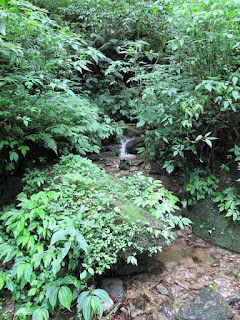 To commence The Kathmandu Project, I visited Bāghdwār today to pay my respects to the headwaters of Bagmati River. Bāghdwār is located in Shivapuri Nagarjun National Park and is a kilometer before you reach the summit of Shivapuri Peak (8,963 ft) in the northen fringes of Kathmandu Valley. Three headwater streams originate at Bāghdwār to make Bagmati River.
To commence The Kathmandu Project, I visited Bāghdwār today to pay my respects to the headwaters of Bagmati River. Bāghdwār is located in Shivapuri Nagarjun National Park and is a kilometer before you reach the summit of Shivapuri Peak (8,963 ft) in the northen fringes of Kathmandu Valley. Three headwater streams originate at Bāghdwār to make Bagmati River. |
| Torkey Baba |
According to Torkey Baba, Shivapuri got it's name because Shiva and Parbati used to live at the Peak. 'Puri" in Nepali and Sanskrit means place of residence. He also informed us that Bāghdwār in fact was originally called Wākhdwār, made of two words 'wak" meaning to spit out and 'dwar' meaning door. Baba informed us that once when Lord Shiva laughed he spit out some saliva, which hit the grounds of Bāghdwār resulting to the origination of Bagmati (originally Wakmati) river.
Torkey Baba seemed well informed and well connected to the organizations that oversaw the preservation of Shivapuri and Bagmati. His cell phone had a ring tone of a famous Pop song that I recognize but can't quite name it. It is not Brittney Spears, but something along the lines.
 |
| Medani kaka takes a break to admire the view of the valley |

So great to read your posts. Gives me a glimpse of what you are experiencing.
ReplyDelete